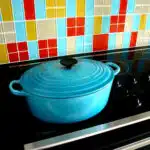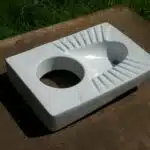As a cleaning expert, it is my duty to share with you the most effective ways to keep your kitchen clean and hygienic. The kitchen sponge is one of the most commonly used items in the kitchen that requires proper cleaning and maintenance. Sponges are often overlooked when it comes to cleaning, yet they have the potential to harbor harmful bacteria that can cause food poisoning.
If not taken care of correctly, kitchen sponges can become breeding grounds for bacteria, making them unhygienic and unsafe for use. In this article, I will guide you through some easy steps on how to properly clean your kitchen sponge so that it remains fresh and germ-free. By following these simple tips, you can ensure that your kitchen sponge stays clean and hygienic, providing a safe environment for food preparation in your home.
The Importance Of Cleaning Your Kitchen Sponge
The kitchen sponge is one of the most commonly used tools in the kitchen. It is used for washing dishes, wiping down counters, and cleaning up spills. Unfortunately, many people do not realize the importance of keeping their sponges clean. A dirty sponge can harbor harmful bacteria that can make you sick.
Cleaning your kitchen sponge regularly is essential to maintaining a healthy and hygienic kitchen environment. Not only does it prevent the growth of bacteria, but it also helps to prolong the life of your sponge. When left uncleaned for too long, sponges can become smelly and discolored, making them less effective at cleaning.
The benefits of cleaning your kitchen sponge are numerous. Regular cleaning helps to remove any dirt or debris that may have accumulated on the surface of the sponge. This makes it easier to clean dishes and surfaces without spreading germs around. Additionally, cleaning your sponge with hot water and soap helps to kill any bacteria that may be present on its surface. By taking these simple steps, you can ensure that your kitchen remains a safe and healthy place to prepare food for yourself and others.
Understanding how bacteria grows on sponges is crucial in preventing cross-contamination in the kitchen. Let’s take a closer look at this process and learn some tips for keeping your sponges free from harmful germs.
Understanding Bacteria Growth On Sponges
According to recent studies, the average kitchen sponge is home to more than 10 million bacteria per square inch. This is a staggering statistic that highlights the importance of cleaning your sponge regularly. Not only can a dirty sponge lead to unpleasant odors and unsightly stains on your dishes, but it can also pose a serious health risk.
Bacteria prevention is key when it comes to keeping your kitchen sponge clean. One of the most effective ways to do this is by using hot water and soap to sanitize your sponge after each use. It’s also important to replace your sponge frequently – every two weeks or sooner if it shows signs of wear and tear.
Sponge contamination can occur when food particles get trapped in the sponge’s porous surface, providing a breeding ground for bacteria. Signs your sponge needs cleaning include a foul odor, discoloration, and visible debris. By taking these simple steps to keep your kitchen sponge clean, you can ensure that you’re doing everything possible to keep yourself and your family safe from harmful bacteria.
Signs Your Sponge Needs Cleaning
It is crucial to keep your kitchen sponge clean to prevent the spread of harmful bacteria. However, many people are unaware of the signs that indicate their sponge needs cleaning. The first sign is a foul odor emanating from the sponge. A smelly sponge indicates that bacteria have started to breed on its surface.
Another sign that your sponge needs cleaning is discoloration. You may notice brown or yellow spots on your sponge, which are indications of mold growth. Mold growth can cause various health problems, including respiratory issues and allergies. Therefore, it is vital to replace your sponge immediately if you notice any signs of discoloration.
Common misconceptions about cleaning sponges include microwaving and boiling them for sanitization purposes. However, these methods do not necessarily kill all the bacteria present on the sponge’s surface. Alternative cleaning methods include soaking sponges in a mixture of water and vinegar or bleach solution for at least five minutes before rinsing thoroughly with warm water.
Now that you know how to identify when your kitchen sponge needs cleaning and some common misconceptions about its sanitation, it’s time to learn how often you should clean it to maintain a healthy kitchen environment.
How Often Should You Clean Your Sponge?
If you’ve noticed any of the signs mentioned in the previous section, it’s time to clean your kitchen sponge. But how often should you be doing this? The frequency of cleaning depends on how frequently you use the sponge and what you use it for. If you use it daily to clean dishes, countertops and other surfaces, then it is recommended to clean it every other day. However, if you only use it occasionally, then once a week might suffice.
It’s important to note that sponges have a lifespan too. Even with regular cleaning, they need to be replaced after a certain duration. On average, a kitchen sponge should be replaced every two weeks or sooner if it starts showing signs of wear and tear. This is because over time, sponges become a breeding ground for bacteria and germs which can lead to food poisoning and illnesses.
Cleaning your sponge regularly not only helps prolong its lifespan but also ensures that your kitchen stays hygienic. Here are some emotional benefits of keeping your sponge clean:
- Peace of mind: Knowing that your sponge is free from harmful bacteria gives you peace of mind when preparing meals for yourself or others.
- Cleanliness: A clean sponge means cleaner dishes and surfaces which can contribute towards maintaining cleanliness in your home.
- Health: Regularly cleaning your sponge reduces the chances of illness-causing germs spreading in your home.
In the next section, we will discuss the different methods of cleaning your sponge so that you can choose the one that suits you best.
The Different Methods Of Cleaning Your Sponge
- Boiling a sponge for a few minutes is one of the most effective methods for cleaning and disinfecting it.
- Baking soda is an ideal abrasive for scrubbing away stubborn stains, while the addition of a few drops of dish soap will help to break down sticky residues.
- Vinegar and hydrogen peroxide can be used to disinfect a sponge, while the scent of lemon juice can be used to help remove odors.
- Microwaving a sponge with water, steam cleaning, rubbing alcohol, essential oils, freezing, and salt can help to keep it free of bacteria and germs.
Boiling
Boiling is one of the most commonly used methods for cleaning a kitchen sponge. This method involves boiling the sponge in water for several minutes to kill off any bacteria that may be present. One of the benefits of boiling is that it is an effective way to remove stubborn stains and odors from the sponge. Boiling also helps to extend the life of the sponge, making it a cost-effective option.
However, there are some drawbacks to boiling as a cleaning method. Boiling can cause the sponge to break down faster, reducing its lifespan. Additionally, if the water is not hot enough, it may not kill all of the bacteria present on the sponge. It is important to take caution when using this method and ensure that the water is at a high enough temperature to effectively clean the sponge.
Overall, boiling can be an effective way to clean your kitchen sponge and extend its life. However, it is important to consider both the benefits and drawbacks before deciding if this method is right for you. If you choose to use this method, make sure that you use caution and follow proper safety guidelines to avoid any accidents or injuries while cleaning your sponge.
Baking Soda
Moving on from boiling, another method for cleaning your kitchen sponge is by using baking soda. Baking soda is a natural and inexpensive cleaning agent that has a variety of uses in the household, including cleaning sponges. One of the benefits of using baking soda is that it can effectively remove stubborn stains and odors from your sponge without causing it to break down quickly. It also has antibacterial properties that can help kill off any bacteria present on the sponge.
To use baking soda as a cleaning method, simply mix a few tablespoons of baking soda with warm water until it forms a paste-like consistency. Then, apply the mixture to your sponge and work it in with your hands or a brush. Let it sit for several minutes before rinsing thoroughly with hot water. This method can be done once or twice a week depending on how often you use your sponge.
While there are many benefits to using baking soda as a cleaning method, it is important to note that it may not be effective for all types of stains or bacteria. In some cases, you may need to use alternative methods such as bleach or vinegar. Additionally, using too much baking soda can cause damage to some surfaces or materials. As always, exercise caution when trying out new cleaning methods and make sure to follow proper safety guidelines.
Soaking Your Sponge In Hot Water
Imagine your kitchen sponge as a dirty and muddy piece of cloth after a long day’s work. Soaking it in hot water is like taking a refreshing shower after a long day, washing away all the dirt and grime from your body. This is why soaking your sponge in hot water can be one of the most effective ways to clean it.
The benefits of using hot water are numerous. For one, it can kill bacteria and germs that might be hiding within your sponge. The heat can also help loosen up any remaining food particles or grease that might have clung onto the surface of the sponge. Additionally, hot water can help dissolve any soap residue that may have built up over time, leaving you with a fresh and clean sponge.
If for some reason you cannot use hot water to soak your sponge, there are alternative solutions available. You may opt to use vinegar or lemon juice instead. These natural substances can act as disinfectants while also providing a fresh scent to your sponge. However, keep in mind that while these alternatives may work well for some people, they may not be as effective as using hot water.
Now that you know how soaking your sponge in hot water can benefit its cleanliness and hygiene, we will move on to another important step: cleaning it with dish soap. By doing this, you will ensure that all the remaining bacteria and germs are eliminated from the surface of the sponge. But before we delve into this topic, let us first make sure that our sponges are properly soaked in hot water or other suitable alternatives.
Using Dish Soap To Clean Your Sponge
Using dish soap is a common and effective way to clean your kitchen sponge. Dish soap contains surfactants that can lift dirt and bacteria from the sponge’s surface. To start, wet your sponge with warm water and add a small amount of dish soap. Rub the sponge together to create lather, making sure to focus on areas that are visibly dirty. Rinse the sponge thoroughly with warm water until all traces of soap have been removed.
When using dish soap to clean your sponge, it is important to follow some sponge cleaning tips to ensure its effectiveness. First, avoid using too much soap as this can leave behind residue that can be harmful when ingested. Second, use warm water instead of hot water as hot water can damage the sponge’s material over time. Finally, make sure to replace your kitchen sponge every 1-2 weeks or when it starts to smell or look worn out.
Effective sponge cleaning methods include not only using dish soap but also employing proper sponge sanitation techniques. After each use, wring out excess moisture and store your sponge in a dry and well-ventilated area away from food debris or other contaminants. You can also sanitize your sponge by microwaving it for 1-2 minutes or running it through the dishwasher on a high-heat cycle.
Transition: While using dish soap is an effective method for cleaning your kitchen sponge, there may be times when you need to take extra measures to disinfect it properly. In the next section, we will discuss how you can use bleach to kill any remaining bacteria on your sponge.
Disinfecting Your Sponge With Bleach
- To prepare an effective bleach solution for disinfecting your kitchen sponge, add 1 teaspoon of bleach to 1 quart of water.
- Submerge the sponge in the solution and let it sit for at least 5 minutes.
- Remove the sponge from the solution and rinse thoroughly with warm water.
- Allow the sponge to air dry before using it again.
Preparing The Bleach Solution
As a cleaning expert, I understand the importance of keeping your kitchen sponge clean and disinfected. One effective way to disinfect your sponge is by using a bleach solution. However, it is important to take necessary precautions when handling bleach as it can be harmful if not used properly.
To prepare the bleach solution, start by mixing one tablespoon of bleach with one quart of water in a container. It is important to use regular household bleach that contains 5.25% or 6% sodium hypochlorite for best results. Ensure that you mix the solution well before using it to disinfect your sponge.
When using the bleach solution, always wear gloves and avoid contact with your skin or eyes as it can cause irritation or burns. Also, make sure to use the solution in a well-ventilated area and avoid mixing it with other cleaning products as this can produce toxic fumes. By taking these precautions, you can effectively disinfect your kitchen sponge without risking harm to yourself or others.
Disinfecting The Sponge
As a cleaning expert, I understand the importance of maintaining a clean and sanitized kitchen. One area that requires particular attention is the kitchen sponge, which can harbor harmful bacteria if not disinfected regularly. While there are natural methods for disinfecting your sponge, such as microwaving or boiling it, using a DIY disinfectant like bleach can provide an extra level of protection against germs.
To disinfect your sponge with bleach, start by preparing a solution of one tablespoon of bleach and one quart of water in a container. Be sure to use regular household bleach with 5.25% or 6% sodium hypochlorite for best results. Mix the solution well before using it to disinfect your sponge.
When using the bleach solution, take necessary precautions to avoid harm to yourself or others. Wear gloves and avoid direct contact with the solution on your skin or eyes as it can cause irritation or burns. Use the solution in a well-ventilated area and avoid mixing it with other cleaning products as this can produce toxic fumes. By following these guidelines, you can effectively disinfect your sponge and maintain a safe and healthy kitchen environment for you and your family.
Microwave Method For Cleaning Your Sponge
According to a recent study, kitchen sponges are one of the dirtiest items in the home, harboring millions of bacteria per square inch. Therefore, it is essential to keep them clean and disinfected regularly. While using bleach is an effective way to disinfect your sponge, it may not be suitable for everyone due to safety concerns or personal preferences.
If you are looking for an alternative cleaning method that does not involve bleach, consider using the microwave. This method involves wetting your sponge and placing it in the microwave for two minutes on high heat. The high temperature kills most of the bacteria present on the sponge. However, it is crucial to follow proper microwave safety procedures when using this method. Make sure your sponge is fully wet before microwaving it and avoid overheating it as this can cause a fire.
Another alternative cleaning solution for your kitchen sponge is a vinegar solution. Vinegar has natural antibacterial properties and can effectively kill germs present on your sponge. To use this method, dampen your sponge with water and place it in a bowl filled with white vinegar solution (one part vinegar to three parts water). Soak the sponge for at least five minutes before rinsing it thoroughly with water. This method is safe and non-toxic but may leave a slight vinegar odor on your sponge.
Transition: While both methods discussed above are effective alternatives to bleach for disinfecting your kitchen sponge, there are other options available as well. One such method involves using hydrogen peroxide solution, which will be discussed in detail in the subsequent section.
Vinegar Solution For Cleaning Your Sponge
Vinegar is a popular and effective solution for cleaning your kitchen sponge. Not only is it natural and affordable, but it also has antibacterial properties that can kill germs and bacteria lingering in your sponge. Using vinegar to clean your sponge can help extend its lifespan and reduce the risk of cross-contamination in your kitchen.
Benefits of vinegar:
- Natural and affordable
- Antibacterial properties
- Extends the lifespan of your sponge
If you prefer not to use vinegar, there are alternatives that are just as effective. One option is hydrogen peroxide, which also has antibacterial properties that can eliminate harmful bacteria on your sponge. Another alternative is using a bleach solution, but be sure to dilute it properly to avoid damaging your sponge.
Alternatives to vinegar:
- Hydrogen peroxide
- Bleach solution (diluted properly)
Regardless of which solution you choose, it’s important to clean your sponge regularly to maintain its effectiveness. Using a vinegar or alternative solution will not only clean your sponge but also help prevent the spread of harmful bacteria in your kitchen. In the next section, we will discuss how to properly store your sponge to further prevent bacterial growth and contamination in your kitchen.
How To Properly Store Your Sponge
Proper Sponge Storage
After cleaning your sponge, it is essential to store it properly. Improper storage can lead to bacterial growth and an unpleasant odor. Here are some sponge maintenance tips for proper storage:
Keep the sponge in a dry place: After use, squeeze out any excess water from the sponge and place it in a well-ventilated area to dry completely. This will prevent bacteria growth.
Store sponges separately: Do not store multiple sponges together as this can transfer bacteria from one sponge to another.
Replace sponges regularly: Even with proper storage, sponges should be replaced every two weeks or when they start to smell bad or fall apart.
To make it easier for you to understand these tips, here is a table that summarizes how to properly store your sponge:
| Tips | Explanation | Importance |
|---|---|---|
| Keep the sponge in a dry place | Prevents bacterial growth by allowing the sponge to dry completely | Essential |
| Store sponges separately | Avoids cross-contamination of bacteria between sponges | Important |
| Replace sponges regularly | Ensures effectiveness of cleaning and prevents bacterial buildup | Very important |
By following these guidelines, you can extend the life of your kitchen sponge and ensure that it remains clean and effective for longer periods.
Now that you know how to properly store your sponge, let’s move on to discussing when it’s time to replace your kitchen sponge.
When To Replace Your Sponge
After learning how to properly store your sponge, it is important to know when to dispose of it. Even with proper storage, a kitchen sponge has a limited lifespan due to the accumulation of bacteria and food particles. It is recommended to replace your sponge every two weeks or as soon as it starts to smell or show signs of wear and tear.
In addition to regular replacement, there are other ways to extend the lifespan of your sponge. Cleaning it regularly with hot water and soap can help remove any bacteria that may have accumulated. Another alternative is microwaving the damp sponge for 30 seconds, which can also kill bacteria.
If you’re looking for alternatives to kitchen sponges altogether, there are a variety of options available such as dishcloths, brushes, and scrubbers made from natural materials like bamboo or loofah. These alternatives not only reduce waste but also provide a more sustainable option for cleaning in the kitchen. Remember that proper cleaning and maintenance are key in keeping any tool used in the kitchen germ-free!
Other Alternatives To Kitchen Sponges
Eco friendly alternatives to kitchen sponges are becoming increasingly popular due to the benefits they offer. The most common non-sponge options are dishcloths, brushes, and silicone scrubbers. Dishcloths are an excellent alternative to sponges as they can be washed and reused multiple times. They come in a variety of materials such as cotton or microfiber and work well for wiping down surfaces or cleaning dishes.
Another eco-friendly option is a brush made from natural materials like bamboo or wood. These brushes are sturdy enough to remove grime from dishes and countertops but gentle enough not to scratch surfaces. They also have replaceable heads, which make them more sustainable than disposable sponges.
Silicone scrubbers are another great alternative for those who want something that lasts longer than a sponge. They are heat resistant, dishwasher safe, and do not retain odors like traditional sponges do. Plus, they come in various shapes and textures that enable them to clean even the toughest stains.
Using non-sponge options in the kitchen provides several benefits such as reducing waste, saving money on disposables, and contributing to a cleaner environment. Additionally, these alternatives are just as effective at cleaning as their sponge counterparts while being gentler on your hands and surfaces.
Moving forward into maintaining a hygienic kitchen, it is essential to know how often you should clean each area of your cooking space. Here are some tips for keeping your kitchen clean and safe for food preparation.
Tips For Maintaining A Hygienic Kitchen
As we have discussed earlier, kitchen sponges can harbor harmful bacteria that can contaminate your food and pose a threat to your health. Maintaining hygiene in the kitchen is crucial for ensuring food safety and preventing the spread of infections. Therefore, it is essential to adopt cleanliness practices that will reduce the risk of contamination.
To maintain a hygienic kitchen, you should wash your hands before handling food or utensils. You should also clean all surfaces that come in contact with raw meat, poultry or seafood with hot soapy water to prevent cross-contamination. Additionally, you must replace dishcloths and sponges frequently as they can harbor bacteria and spread germs.
Now that we have covered some tips for maintaining a hygienic kitchen, let’s focus on how to clean a kitchen sponge. It is recommended to sanitize your sponge daily by rinsing it thoroughly with hot water and wringing it out completely. You can also microwave your sponge for 30 seconds or run it through the dishwasher on the hottest setting to kill any remaining bacteria. By following these simple steps, you can ensure that your sponge stays clean and free from harmful germs.
Conclusion
Ironically, cleaning a kitchen sponge is not as simple as one might think. Despite its purpose of cleaning dishes and surfaces, sponges themselves can harbor harmful bacteria if not cleaned correctly. Luckily, there are several tips and benefits to properly cleaning your kitchen sponge.
Firstly, it is important to clean your sponge regularly. Experts recommend cleaning it at least once a week or even more often if you use it frequently. This will help prevent the buildup of bacteria that can lead to illness. To clean your sponge, wet it thoroughly and put it in the microwave for a minute or soak it in boiling water for five minutes.
Secondly, consider replacing your sponge every few weeks or when it begins to show signs of wear and tear. A new sponge will be more effective at cleaning and will harbor fewer bacteria than an old one.
Thirdly, always wring out excess water from your sponge after each use and store it in a dry location. Moist environments promote bacterial growth, so keeping your sponge dry can help prevent this.
Finally, by following these tips for cleaning your kitchen sponge, you not only ensure that your dishes and surfaces are being properly cleaned but also protect yourself from harmful bacteria that can cause illness. So take the time to clean your sponge regularly and enjoy the benefits of a safe and healthy kitchen environment.
Conclusion
Maintaining a clean and hygienic kitchen is essential for healthy living. However, one aspect that is often overlooked is the cleaning of kitchen sponges. Sponges are known to harbor bacteria, and if not cleaned regularly, they can spread germs and cause foodborne illnesses. In this article, we discussed the importance of cleaning your kitchen sponge, how to identify when it needs cleaning, and different methods to clean your sponge.
It is crucial to understand that bacteria thrive in warm and moist environments. Hence, kitchen sponges provide a conducive environment for bacterial growth. Signs that indicate your sponge needs cleaning include an unpleasant odor or discoloration. Cleaning your sponge should be a regular practice as it helps prevent the spread of harmful bacteria. There are various ways to clean your sponge, including microwaving, boiling in water or vinegar solution, or using a dishwasher.
As the adage goes, prevention is better than cure; it is vital to maintain a hygienic kitchen by adhering to good practices such as washing hands before preparing meals, sanitizing surfaces before and after use, and regularly cleaning kitchen utensils such as sponges. Additionally, replacing old sponges with new ones every few weeks will go a long way in keeping your kitchen free from germs. By following these simple but effective tips, you can ensure that your family remains healthy by maintaining a clean and hygienic kitchen environment.
Image Credits
- “Plain blue and pink polyurethane kitchen sponges” by Horia Varlan (featured)





























